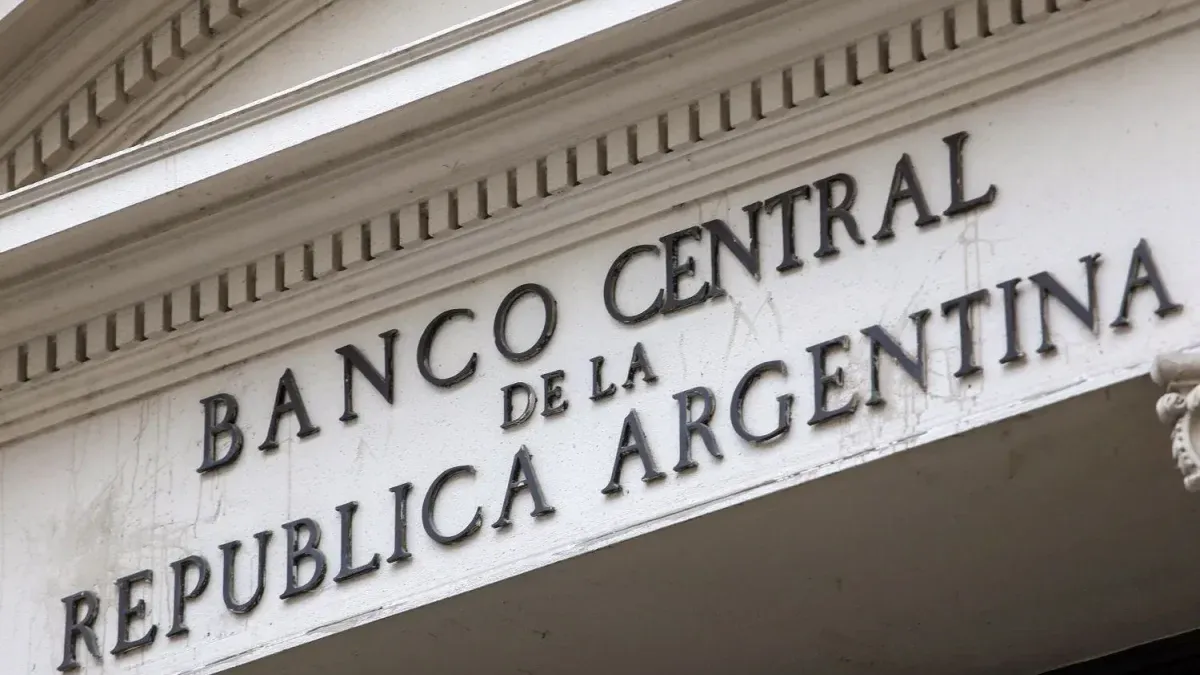Almost two months after the start of a government that had as its central focuses the debt in pesos of the Central Bank, the initial devaluation and the beginning of the fiscal adjustment, several unknowns hover among economic agents about the next steps of the macro plan. One of the main ones is what will happen to the level of interest rates after weeks of sailing well below inflation within the framework of the official strategy of liquefying savings and paid liabilities. Omissions and proposals through the Staff Report of the International Monetary Fund (IMF) left some clues. What do they say in the economic team? What do you expect in the market?
After the strong devaluation, the tandem Luis Caputo – Santiago Bausili stopped bidding on Leliq at 28 days, placed the performance of the one-day Passive Passes as the reference and, consequently, the monetary policy rate low of 133% annual nominal (TNA) to 100%. Thus, while inflation shot up to 211.4% in December, the annual effective rate (TEA) fell from 254.8% to 171.5%. With the Fixed deadlines 30-day retailers did the same: it reduced the floor from a TNA of 133% to one of 110%, the TEA from 253.3% to 186.6% and the monthly yield from 11% to 9%, with an index of consumer prices that marked 25.5%.
The officials’ argument was that it was a consistent alignment of yields with the monthly devaluation rate (crawling peg of 2%) that occurred after the 118% jump in the official dollar, in search of a “nominal anchor.” that initially supported the slower action of the “fiscal anchor.” Although the predominant reading among economists and investors was that the blender plan for savings and paid debt of the Centralas a prior step to being able to lift the exchange rate (and eventually, to dollarize).
The technical report on the agreement with the Government published on IMF Last week, after the approval of the Board of Directors, he advanced several of the next steps of Javier Milei’s economic roadmap. But, curiously, the Staff of the organization headed by Kristalina Georgieva omitted one of its leitmotifs: the requirement to establish a positive interest rate in real terms, that is, it beats inflation clearly. This time, the mantra did not appear.
However, the document raised: “In the context of strict capital controls, the central bank relaxed monetary policy and simplified the operational framework. “Monetary policy is expected to evolve to support money demand and disinflation, including by establishing a nominal anchor.” And he noted that officials “agreed that it would be necessary to tighten the monetary policy stance” in search of those goals.
An investor and banking representative, who preferred off the record, agreed that this message from the IMF reflects that it is not satisfied with such a negative rate. “It is the point that makes the most noise about the macroeconomic program,” summarized one of them, who estimated It probably won’t be long until you see a rate hike between 10 and 20 percentage points. The reading is consistent with another of the Fund’s proposals: to accelerate the pace of devaluation to avoid “a rapid erosion of competitiveness gains, while the new anchor of monetary policy would assume the role of anchoring inflation.” From the future dollar contracts, it is already clear that the market price rises 5% in March and 13% in April.
IMF Milei.jpg
Rates: the official strategy
In it economic team study that rate decision take after the INDEC releases January inflation, on Wednesday of next week. When consulted by Ámbito, they neither confirm nor rule out any movement. A high font officer maintained that The agreement indicated by the IMF is thatafter the initial measures, “the rate will be less accommodative going forward”. Although they were careful to clarify that this can happen either because inflation drops and the rate remains the same or because the CPI remains unchanged and the rate rises. The proposal is that monetary policy will be designed to “limit the passthrough of devaluation to prices,” he added.
In official offices they draw up accounts. They affirm that, if a January CPI of around 20% is confirmed, it would imply that half of that percentage was due to the statistical drag left by the post-devaluation flash in December. And, therefore, the average monthly inflation would be 10%. “That scenario would be very consistent with what the IMF expects. Monetary conditions would be much less accommodative than at the end of December” due to a smaller gap between the rate and the CPI, they propose.
On the horizon, they explain that “as a general long-term equilibrium” is moving towards a positive real rate in line with the objective of lifting capital restrictions as soon as possible.
Cups and blender
Meanwhile, the truth is that the blender worked fully. Devaluation and its transfer to prices, negative rates, the migration of a portion of the banks’ holdings of debt from the BCRA to Treasury securities and the dollarization of another part through the BOPREAL resulted in a fall in real terms in the stock of paid liabilities of the Central. Measured at the CCL exchange rate, the consulting firm 1816 estimated that it is already barely 5% above the 2003 floor.
In this framework, the economist and former vice president of the BCRA Jorge Carrera considered that the IMF “feigns insanity” with respect to its usual demand for positive real rates. Carrera participated in the first six reviews of the current Extended Facilities program, with which Alberto Fernández’s government refinanced the US$45,000 million that Mauricio Macri took in 2018. In dialogue with Ámbito, he recalled that in the documents corresponding to both audits, the Staff always stated in several sections that “the real rate has to be sufficiently positive”, both for fixed terms and for monetary policy. “Now the request has disappeared from the radar, despite the fact that not only is it not positive but it is extremely negative,” he remarked and linked it to the fact that the organization chose to give a vote of confidence to Milei regarding the shock fiscal adjustment plan.
Regarding the strategy of the current economic team, the former official considered that “The Government chose to carry out a contractionary monetary policy on the side of monetary aggregates and not through the cost of money, which would imply a positive real rate.” “They want to reduce the base, the M2 and the M3, which includes fixed terms. They do this by not issuing to finance the Treasury (although they do do so to buy foreign currency) and liquefying those aggregates. Those that do not receive any interest payments, such as savings accounts and checking accounts, liquidate at the rate of inflation. And the fixed terms, which had an interest that was close to inflation, now with a rate of 9% are obviously liquefying at a terrifying speed day by day,” he emphasized.
Thus, for Carrera, there is a risk with this policy: “Destroy the demand for money. Not only because those who have fixed deadlines are forced to flee. “It is a dangerous issue because the fixed term is one of the most stable forms of financing in the financial system.”
Source: Ambito




